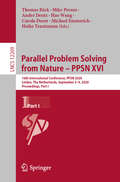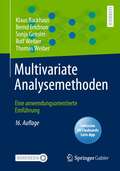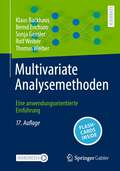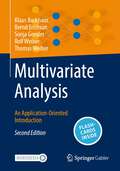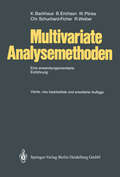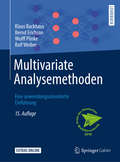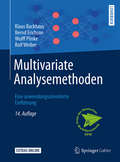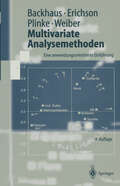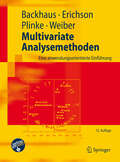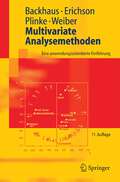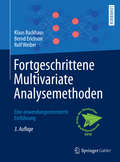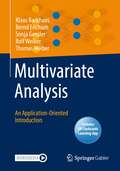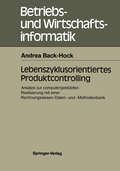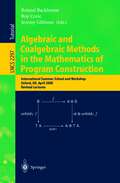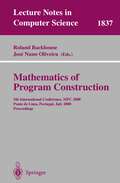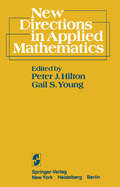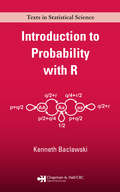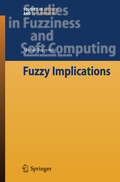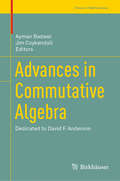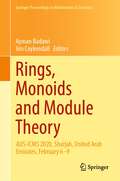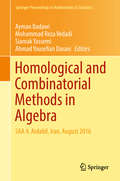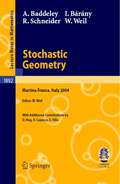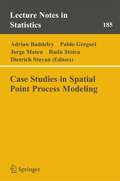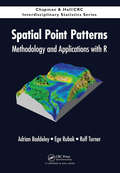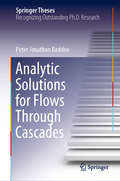- Table View
- List View
Parallel Problem Solving from Nature – PPSN XVI: 16th International Conference, PPSN 2020, Leiden, The Netherlands, September 5-9, 2020, Proceedings, Part I (Lecture Notes in Computer Science #12269)
by Thomas Bäck Mike Preuss André Deutz Hao Wang Carola Doerr Michael Emmerich Heike TrautmannThis two-volume set LNCS 12269 and LNCS 12270 constitutes the refereed proceedings of the 16th International Conference on Parallel Problem Solving from Nature, PPSN 2020, held in Leiden, The Netherlands, in September 2020. The 99 revised full papers were carefully reviewed and selected from 268 submissions. The topics cover classical subjects such as automated algorithm selection and configuration; Bayesian- and surrogate-assisted optimization; benchmarking and performance measures; combinatorial optimization; connection between nature-inspired optimization and artificial intelligence; genetic and evolutionary algorithms; genetic programming; landscape analysis; multiobjective optimization; real-world applications; reinforcement learning; and theoretical aspects of nature-inspired optimization.
Multivariate Analysemethoden: Eine anwendungsorientierte Einführung
by Klaus Backhaus Bernd Erichson Sonja Gensler Rolf Weiber Thomas WeiberWir leben in einer Welt der Daten. Daten allein aber sind wertlos, wenn wir nicht in der Lage sind, aus ihnen Informationen zu gewinnen. Um Informationen aus Daten zu extrahieren, sind Methoden der multivariaten Datenanalyse unerlässlich.Dieses Buch bietet eine leicht verständliche Einführung in die wichtigsten Methoden der multivariaten Datenanalyse. Es ist anwendungsorientiert, erfordert nur wenige Kenntnisse in Mathematik und Statistik, demonstriert die Verfahren mit numerischen Beispielen und veranschaulicht jede Methode anhand eines ausführlichen Fallbeispiels. Für Interessierte werden im Einführungskapitel für alle Verfahren relevante statistische Grundlagen aufgefrischt. Für die 16. Auflage wurden alle Kapitel inkl. Fallbeispielen neu gefasst und mit der aktuellen Version von IBM SPSS gerechnet. Neue, für die anwendungsorientierten Nutzer sinnvolle Auswertungsoptionen wurden ergänzt.Der InhaltEinführung in die empirische Datenanalyse – Regressionsanalyse – VarianzanalyseDiskriminanzanalyse – Logistische Regression – Kontingenzanalyse – FaktorenanalyseClusteranalyse – Conjoint-AnalyseDas Buch wurde 2015 vom Berufsverband Deutscher Markt- und Sozialforscher (BVM) als das Lehrbuch ausgezeichnet, das die deutsche Marktforschungspraxis in den letzten Jahrzehnten nachhaltig geprägt hat. Es ist auch in Englisch und Chinesisch erschienen.Auf der Webseite www.multivariate-methods.info werden weitere Materialien (bspw. Excel-Beispiele, R Code) angeboten, durch die sich die Verfahren noch besser erschließen und vertiefen lassen. Interaktive Flashcards helfen den eigenen Lernfortschritt zu kontrollieren. Mit der Springer Nature Flashcards-App können Sie exklusive Inhalte nutzen und Ihr Wissen testen.
Multivariate Analysemethoden: Eine anwendungsorientierte Einführung
by Klaus Backhaus Bernd Erichson Sonja Gensler Rolf Weiber Thomas WeiberWir leben in einer Welt der Daten. Daten allein aber sind wertlos, wenn wir nicht in der Lage sind, aus ihnen Informationen zu gewinnen. Um Informationen aus Daten zu extrahieren, sind Methoden der multivariaten Datenanalyse unerlässlich.Dieses Buch bietet eine leicht verständliche Einführung in die wichtigsten Methoden der multivariaten Datenanalyse. Es ist anwendungsorientiert, erfordert nur wenige Kenntnisse in Mathematik und Statistik, demonstriert die Verfahren mit numerischen Beispielen und veranschaulicht jede Methode anhand eines ausführlichen Fallbeispiels. Für Interessierte werden im Einführungskapitel für alle Verfahren relevante statistische Grundlagen aufgefrischt. Für die 17. Auflage wurden alle Kapitel überprüft und mit der aktuellen Version von IBM SPSS gerechnet.Der InhaltEinführung in die empirische Datenanalyse – Regressionsanalyse – Varianzanalyse – Diskriminanzanalyse – Logistische Regression – Kontingenzanalyse – Faktorenanalyse – Clusteranalyse – Conjoint-AnalyseDas Buch wurde 2015 vom Berufsverband Deutscher Markt- und Sozialforscher (BVM) als das Lehrbuch ausgezeichnet, das die deutsche Marktforschungspraxis in den letzten Jahrzehnten nachhaltig geprägt hat. Es ist auch in Englisch und Chinesisch erschienen.Auf der Webseite www.multivariate-methods.info werden weitere Materialien (bspw. Excel-Beispiele, R Code) angeboten, durch die sich die Verfahren noch besser erschließen und vertiefen lassen. Interaktive Flashcards helfen den eigenen Lernfortschritt zu kontrollieren. Mit der Springer Nature Flashcards-App können Sie exklusive Inhalte nutzen und Ihr Wissen testen.
Multivariate Analysis: An Application-Oriented Introduction
by Klaus Backhaus Bernd Erichson Sonja Gensler Rolf Weiber Thomas WeiberData can be extremely valuable if we are able to extract information from them. This is why multivariate data analysis is essential for business and science. This book offers an easy-to-understand introduction to the most relevant methods of multivariate data analysis. It is strictly application-oriented, requires little knowledge of mathematics and statistics, demonstrates the procedures with numerical examples and illustrates each method via a case study solved with IBM’s statistical software package SPSS. Extensions of the methods and links to other procedures are discussed and recommendations for application are given. An introductory chapter presents the basic ideas of the multivariate methods covered in the book and refreshes statistical basics which are relevant to all methods.For the 2nd edition, all chapters were checked and calculated using the current version of IBM SPSS.ContentsIntroduction to empirical data analysisRegression analysisAnalysis of varianceDiscriminant analysisLogistic regression Contingency analysisFactor analysisCluster analysisConjoint analysisThe original German version is now available in its 17th edition. In 2015, this book was honored by the Federal Association of German Market and Social Researchers as “the textbook that has shaped market research and practice in German-speaking countries”. A Chinese version is available in its 3rd edition.On the website www.multivariate-methods.info, the authors further analyze the data with Excel and R and provide additional material to facilitate the understanding of the different multivariate methods. In addition, interactive flashcards are available to the reader for reviewing selected focal points. Download the Springer Nature Flashcards App and use exclusive content to test your knowledge.
Multivariate Analysemethoden: Eine anwendungsorientierte Einführung
by Klaus Backhaus Bernd Erichson Wulff Plinke Christiane Schuchard-Ficher Rolf WeiberMultivariate Analysemethoden: Eine anwendungsorientierte Einführung
by Klaus Backhaus Bernd Erichson Wulff Plinke Rolf WeiberDieses Lehrbuch behandelt, nach einer kurzen Einführung in die Grundlagen der Datenanalyse und das Analyseprogramm IBM SPSS für Windows, neun grundlegende Verfahren der multivariaten Datenanalyse in ausführlicher Weise. Dies sind die:- Regressionsanalyse- Zeitreihenanalyse- Varianzanalyse- Diskriminanzanalyse- Logistische Regression- Kontingenzanalyse- Faktorenanalyse- Clusteranalyse und- Conjoint-Analyse.Das Buch stellt geringstmögliche Anforderungen an mathematische Vorkenntnisse und bietet eine allgemein verständliche Darstellung. Ergänzt wird die Einführung in die Grundlagen der jeweiligen Methode durch ein Fallbeispiel, das unter Verwendung von IBM SPSS für Windows berechnet wird. Die Autoren legen Wert auf konsequente Anwendungsorientierung und vollständige Nachvollziehbarkeit der zentralen Rechenoperationen durch den Leser. Jedes Verfahren kann unabhängig für sich durchgeführt werden. Ein besonderes Augenmerk liegt auf dem Aufzeigen von methodenspezifischen Gestaltungsoptionen im Rahmen von IBM SPSS. Darüber hinaus werden jeweils in Form einer kurzen Einführung die Problemstellungen und Vorgehensweisen von sieben weiteren Verfahren (Nichtlineare Regression, Strukturgleichungsmodelle, Konfirmatorische Faktorenanalyse, Neuronale Netze, Multidimensionale Skalierung, Korrespondenzanalyse und Auswahlbasierte Conjoint-Analyse) dargestellt. Diese werden in dem vertiefenden Band „Fortgeschrittene Multivariate Analyseverfahren“ ausführlich behandelt.Dieses Lehrbuch richtet sich primär an die Zielgruppe der Bachelor-Studierenden aller Fachrichtungen. Die Beispiele sind zwar aus dem Marketing-Bereich entnommen, die Darstellungen aber so einfach gehalten, dass die Verfahren sich leicht auf spezifische Fragen und Probleme in den unterschiedlichsten Anwendungsfeldern übertragen lassen. Weitere Serviceleistungen stehen den Leserinnen und Lesern auf einer Internetseite zur Verfügung.In der 15. Auflage wurden alle Kapitel überarbeitet. Alle Fallbeispiele wurden mit der neuesten SPSS-Version (SPSS 25) berechnet und neue für den anwendungsorientierten Nutzer sinnvolle Auswertungsoptionen wurden ergänzt.Anlässlich des 50. Kongresses der Deutschen Marktforschung des Berufsverbandes Deutscher Markt- und Sozialforscher e. V. (BVM) wurde die Vorauflage als das Lehrbuch ausgezeichnet, das die deutsche Marktforschungspraxis in den letzten Jahrzehnten nachhaltig geprägt hat.Die Autoren((hier die Autorenportraits))
Multivariate Analysemethoden: Eine anwendungsorientierte Einführung
by Klaus Backhaus Bernd Erichson Wulff Plinke Rolf WeiberDieses Lehrbuch behandelt neun grundlegende Verfahren der multivariaten Datenanalyse in ausführlicher Weise. Dies sind die:- Regressionsanalyse- Zeitreihenanalyse- Varianzanalyse- Diskriminanzanalyse- Logistische Regression- Kontingenzanalyse- Faktorenanalyse- Clusteranalyse und- Conjoint-Analyse. Das Buch stellt geringstmögliche Anforderungen an mathematische Vorkenntnisse und bietet eine allgemein verständliche Darstellung anhand eines für alle Methoden verwendeten Fallbeispiels unter Verwendung von IBM SPSS für Windows. Die Autoren legen Wert auf konsequente Anwendungsorientierung und vollständige Nachvollziehbarkeit der zentralen Rechenoperationen durch den Leser. Jedes Verfahren kann unabhängig für sich durchgeführt werden. Ein besonderes Augenmerk liegt auf dem Aufzeigen von methodenbedingten Manipulationsspielräumen. Darüber hinaus werden jeweils in Form einer kurzen Einführung die Problemstellungen und Vorgehensweisen von sieben weiteren Verfahren (Nichtlineare Regression, Strukturgleichungsmodelle, Konfirmatorische Faktorenanalyse, Neuronale Netze, Multidimensionale Skalierung, Korrespondenzanalyse und Auswahlbasierte Conjoint-Analyse) dargestellt. Diese werden in dem vertiefenden Band „Fortgeschrittene Multivariate Analyseverfahren“ ausführlich behandelt. Der vorliegende Band richtet sich primär an die Zielgruppe der Bachelor-Studierenden aller Fachrichtungen. Die Beispiele sind zwar aus dem Marketing-Bereich entnommen, die Darstellungen aber so einfach gehalten, dass die Verfahren sich leicht auf spezifische Fragen und Probleme in den unterschiedlichsten Anwendungsfeldern übertragen lassen. Über die Internetseite www.multivariate.de werden den Leserinnen und Lesern weitere Serviceleistungen zur Verfügung gestellt.In der 14. Auflage wurden alle Kapitel überarbeitet. Beispiele, soweit sie mit SPSS gerechnet wurden, sind auf die neueste SPSS-Version umgestellt worden und neue für den anwendungsorientierten Nutzer sinnvolle Auswertungsoptionen wurden ergänzt.Anlässlich des 50. Kongresses der Deutschen Marktforschung des Berufsverbandes Deutscher Markt- und Sozialforscher e. V. (BVM) wurde das vorliegende Buch als das Lehrbuch ausgezeichnet, das die deutsche Marktforschungspraxis in den letzten Jahrzehnten nachhaltig geprägt hat.
Multivariate Analysemethoden: Eine anwendungsorientierte Einführung (Springer-Lehrbuch)
by Klaus Backhaus Bernd Erichson Wulff Plinke Rolf WeiberMultivariate Analysemethoden: Eine anwendungsorientierte Einführung (Springer-Lehrbuch)
by Klaus Backhaus Bernd Erichson Wulff Plinke Rolf WeiberMit der 12. Auflage des bewährten Lehrbuchs legen wir eine neue Konzeption vor. Wir haben den methodischen Inhalt erweitert, ohne die bisherigen Verfahren einzuschränken oder zu verdrängen. Da die Erweiterung das Buch jedoch nicht mehr handhabbar macht, haben wir uns entschieden, den Leserinnen und Lesern einen zweigeteilten Weg des Zugangs zu den verschiedenen Methoden zu verschaffen. Das neue Angebot besteht neben dem Buch mit den bewährten Verfahren im Zugang zu einer Internetplattform. Das Buch umfasst die „grundlegenden Verfahren der muen Analysemethoden" in ihrer bewährten Form sowie jeweils eine kurze ltivariatEinführung in die verschiedenen „komplexen Verfahren der multivariaten Analyse". Die Plattform gewährleistet den Zugang zu den komplexen Verfahren im Detail. Wir schaffen damit eine Erweiterung des Angebots bei gleichzeitiger Möglichkeit eines selektiven Zugangs zu den tatsächlich benötigten Verfahren. Die Fallbeispiele sind mit SPSS 16.0 gerechnet.
Multivariate Analysemethoden: Eine anwendungsorientierte Einführung (Springer-Lehrbuch)
by Klaus Backhaus Bernd Erichson Wulff Plinke Rolf WeiberDas Lehrbuch behandelt 12 wichtige Verfahren der multivariaten Analysemethoden. Dies sind Regressions-, Varianz-, Diskriminanz-, Kontingenz-, Faktoren-, Cluster-, Korrespondenz- und logistische Regressionsanalyse sowie Conjoint Measurement, Multidimensionale Skalierung, Strukturgleichungsmodelle (AMOS) und Neuronale Netze (CLEMENTINE). Die Vorteile des Buches liegen in geringst möglichen Anforderungen an mathematische Vorkenntnisse, allgemeinverständliche Darstellung anhand eines für alle Methoden verwendeten einheitlichen Fallbeispiels, konsequente Anwendungsorientierung, Erläuterung der Fallbeispiele unter Verwendung von SPSS 13.0 für Windows, vollständige Nachvollziehbarkeit der zentralen Rechenoperationen durch den Leser, Aufzeigen von methodenbedingten Manipulationsspielräumen, unabhängige Erschließbarkeit jedes Verfahrens. In der 11. Auflage wurden die Neuronalen Netze im Fallbeispiel mit dem Programm CLEMENTINE neu gerechnet und die entsprechenden Outputs kommentiert. Alle Verfahren wurden überarbeitet sowie aktualisiert und alle Fallbeispiele mit SPSS 13.0 neu gerechnet. Die Ergebnisse werden anhand der aktuellen Screenshots demonstriert. Das Buch ist von besonderem Nutzen für alle, die sich mit den Methoden der multivariaten Datenanalyse vertraut machen möchten. Die Beispiele sind aus dem Marketing-Bereich entnommen, die Darstellung ist aber so einfach gehalten, dass jeder Leser die Fragestellungen versteht und auf seine spezifischen Probleme in anderen Bereichen übertragen kann. Weiterhin wird ein Informationsservice für Leser sowie ein Dozentenservice im Internet unter http://www.multivariate.de geboten.
Fortgeschrittene Multivariate Analysemethoden: Eine anwendungsorientierte Einführung
by Klaus Backhaus Bernd Erichson Rolf WeiberDieses Lehrbuch behandelt weiterführende Verfahren der multivariaten Datenanalyse und ist gezielt auf Master- und Doktoranden-Studiengänge ausgerichtet. Folgende Verfahren werden vorgestellt: - Nichtlineare Regressionsanalyse- Strukturgleichungsanalyse - Konfirmatorische Faktorenanalyse - Auswahlbasierte Conjoint-Analyse- Neuronale Netze - Multidimensionale Skalierung (MDS) - Korrespondenzanalyse. Zum Verständnis sind geringstmögliche mathematische Vorkenntnisse erforderlich und jedes Kapitel kann für sich eigenständig gelesen werden. Nach der intuitiven Erläuterung der Vorgehensweise der einzelnen Verfahren werden diese mit Hilfe eines ausführlichen Fallbeispiels sowie unter Verwendung der Statistik-Software IBM SPSS und teilweise auch mit MS Excel und der Conjoint-Software von Sawtooth sowie AMOS gerechnet und interpretiert. Dabei wurde Wert darauf gelegt, dass alle Rechenschritte für den Anwender nachvollziehbar sind, und es werden Anwendungsempfehlungen gegeben. Auf der Internetseite multivariate.de bieten wir weitere Serviceleistungen. Von Dozenten können u. a. die Abbildungen angefordert werden.Die hier dargestellten Verfahren waren bis 2011 Bestandteil des Lehrbuchs Multivariate Analysemethoden. Dort werden die vor allem für das Bachelor-Studium zentralen Verfahren der Regressions-, Zeitreihen-, Varianz-, Diskriminanz-, logistischen Regressions-, Kontingenz-, Faktoren-, Cluster- und Conjoint-Analyse behandelt. Das bereits in der 14. Auflage vorliegende Buch Multivariate Analysemethoden der Autoren wurde im Jahr 2015 anlässlich des 50. Kongresses der Deutschen Marktforschung des BVM Berufsverband Deutscher Markt- und Sozialforscher e. V. mit dem Preis der Deutschen Marktforschung ausgezeichnet, weil es die deutsche Marktforschungspraxis in den letzten Jahrzehnten nachhaltig geprägt hat.In der 3. Auflage des Werks Fortgeschrittene Multivariate Analysemethoden wurden alle Kapitel überarbeitet und die vorgestellten Verfahren mit den aktuellen Versionen von IBM SPSS, AMOS sowie Sawtooth gerechnet.
Multivariate Analysis: An Application-Oriented Introduction
by Klaus Backhaus Rolf Weiber Bernd Erichson Thomas Weiber Sonja GenslerData can be extremely valuable if we are able to extract information from them. This is why multivariate data analysis is essential for business and science. This book offers an easy-to-understand introduction to the most relevant methods of multivariate data analysis. It is strictly application-oriented, requires little knowledge of mathematics and statistics, demonstrates the procedures with numerical examples and illustrates each method via a case study solved with IBM’s statistical software package SPSS. Extensions of the methods and links to other procedures are discussed and recommendations for application are given. An introductory chapter presents the basic ideas of the multivariate methods covered in the book and refreshes statistical basics which are relevant to all methods.ContentsIntroduction to empirical data analysisRegression analysisAnalysis of varianceDiscriminant analysisLogistic regression Contingency analysisFactor analysisCluster analysisConjoint analysisThe original German version is now available in its 16th edition. In 2015, this book was honored by the Federal Association of German Market and Social Researchers as “the textbook that has shaped market research and practice in German-speaking countries”. A Chinese version is available in its 3rd edition.On the website www.multivariate-methods.info, the authors further analyze the data with Excel and R and provide additional material to facilitate the understanding of the different multivariate methods. In addition, interactive flashcards are available to the reader for reviewing selected focal points. Download the Springer Nature Flashcards App and use exclusive content to test your knowledge.
Lebenszyklusorientiertes Produktcontrolling: Ansätze zur computergestützten Realisierung mit einer Rechnungswesen-Daten- und -Methodenbank (Betriebs- und Wirtschaftsinformatik #34)
by Andrea Back-HockAlgebraic and Coalgebraic Methods in the Mathematics of Program Construction: International Summer School and Workshop, Oxford, UK, April 10-14, 2000, Revised Lectures (Lecture Notes in Computer Science #2297)
by Roland Backhouse Roy Crole Jeremy GibbonsProgram construction is about turning specifications of computer software into implementations. Recent research aimed at improving the process of program construction exploits insights from abstract algebraic tools such as lattice theory, fixpoint calculus, universal algebra, category theory, and allegory theory.This textbook-like tutorial presents, besides an introduction, eight coherently written chapters by leading authorities on ordered sets and complete lattices, algebras and coalgebras, Galois connections and fixed point calculus, calculating functional programs, algebra of program termination, exercises in coalgebraic specification, algebraic methods for optimization problems, and temporal algebra.
Mathematics of Program Construction: 5th International Conference, MPC 2000 Ponte de Lima, Portugal, July 3-5, 2000 Proceedings (Lecture Notes in Computer Science #1837)
by Roland Backhouse Jose Nuno OliveiraThis volume contains the proceedings of MPC 2000, the ?fth international c- ference on Mathematics of Program Construction. This series of conferences aims to promote the development of mathematical principles and techniques that are demonstrably useful and usable in the process of constructing c- puter programs (whether implemented in hardware or software). The focus is on techniques that combine precision with concision, enabling programs to be constructed by formal calculation. Within this theme, the scope of the series is very diverse, including programming methodology, program speci?cation and transformation, programming paradigms, programming calculi, and progr- ming language semantics. The quality of the papers submitted to the conference was in general very high. However,the number of submissions has decreased compared to the pre- ous conferences in the series. Each paper was refereed by at least ?ve and often more committee members. In order to maintain the high standards of the c- ference the committee took a stringent view on quality; this has meant that, in some cases, a paper was rejected even though there was a basis for a good c- ference or journal paper but the submitted paper did not meet the committee’s required standards. In a few cases a good paper was rejected on the grounds that it did not ?t within the scope of the conference.
New Directions in Applied Mathematics: Papers Presented April 25/26, 1980, on the Occasion of the Case Centennial Celebration
by K. BaclawskiIt is close enough to the end of the century to make a guess as to what the Encyclopedia Britannica article on the history of mathematics will report in 2582: "We have said that the dominating theme of the Nineteenth Century was the development and application of the theory of functions of one variable. At the beginning of the Twentieth Century, mathematicians turned optimistically to the study off unctions of several variables. But wholly unexpected difficulties were met, new phenomena were discovered, and new fields of mathematics sprung up to study and master them. As a result, except where development of methods from earlier centuries continued, there was a recoil from applications. Most of the best mathematicians of the first two-thirds of the century devoted their efforts entirely to pure mathe matics. In the last third, however, the powerful methods devised by then for higher-dimensional problems were turned onto applications, and the tools of applied mathematics were drastically changed. By the end of the century, the temporary overemphasis on pure mathematics was completely gone and the traditional interconnections between pure mathematics and applications restored. "This century also saw the first primitive beginnings of the electronic calculator, whose development in the next century led to our modern methods of handling mathematics.
Introduction to Probability with R (Chapman And Hall/crc Texts In Statistical Science Ser.)
by Kenneth BaclawskiBased on a popular course taught by the late Gian-Carlo Rota of MIT, with many new topics covered as well, Introduction to Probability with R presents R programs and animations to provide an intuitive yet rigorous understanding of how to model natural phenomena from a probabilistic point of view. Although the R programs are small in length, they ar
Fuzzy Implications (Studies in Fuzziness and Soft Computing)
by Michał Baczyński Balasubramaniam JayaramAdvances in Commutative Algebra: Dedicated to David F. Anderson (Trends in Mathematics)
by Ayman Badawi Jim CoykendallThis book highlights the contributions of the eminent mathematician and leading algebraist David F. Anderson in wide-ranging areas of commutative algebra. It provides a balance of topics for experts and non-experts, with a mix of survey papers to offer a synopsis of developments across a range of areas of commutative algebra and outlining Anderson’s work. The book is divided into two sections—surveys and recent research developments—with each section presenting material from all the major areas in commutative algebra. The book is of interest to graduate students and experienced researchers alike.
Rings, Monoids and Module Theory: AUS-ICMS 2020, Sharjah, United Arab Emirates, February 6–9 (Springer Proceedings in Mathematics & Statistics #382)
by Ayman Badawi Jim CoykendallThis book contains select papers on rings, monoids and module theory which are presented at the 3rd International Conference on Mathematics and Statistics (AUS-ICMS 2020) held at the American University of Sharjah, United Arab Emirates, from 6–9 February 2020. This conference was held in honour of the work of the distinguished algebraist Daniel D. Anderson. Many participants and colleagues from around the world felt it appropriate to acknowledge his broad and sweeping contributions to research in algebra by writing an edited volume in his honor. The topics covered are, inevitably, a cross-section of the vast expansion of modern algebra. The book is divided into two sections—surveys and recent research developments—with each section hopefully offering symbiotic utility to the reader. The book contains a balanced mix of survey papers, which will enable expert and non-expert alike to get a good overview of developments across a range of areas of algebra. The book is expected to be of interest to both beginning graduate students and experienced researchers.
Homological and Combinatorial Methods in Algebra: SAA 4, Ardabil, Iran, August 2016 (Springer Proceedings in Mathematics & Statistics #228)
by Ayman Badawi Mohammad Reza Vedadi Siamak Yassemi Ahmad Yousefian DaraniBased on the 4th Seminar on Algebra and its Applications organized by the University of Mohaghegh Ardabili, this volume highlights recent developments and trends in algebra and its applications. Selected and peer reviewed, the contributions in this volume cover areas that have flourished in the last few decades, including homological algebra, combinatorial algebra, module theory and linear algebra over rings, multiplicative ideal theory, and integer-valued polynomials. Held biennially since 2010, SAA introduces Iranian faculty and graduate students to important ideas in the mainstream of algebra and opens channels of communication between Iranian mathematicians and algebraists from around the globe to facilitate collaborative research. Ideal for graduate students and researchers in the field, these proceedings present the best of the seminar’s research achievements and new contributions to the field.
Stochastic Geometry: Lectures given at the C.I.M.E. Summer School held in Martina Franca, Italy, September 13-18, 2004 (Lecture Notes in Mathematics #1892)
by A. Baddeley I. Bárány R. Schneider W. WeilStochastic Geometry is the mathematical discipline which studies mathematical models for random geometric structures. This book collects lectures presented at the CIME summer school in Martina Franca in September 2004. The main lecturers covered Spatial Statistics, Random Points, Integral Geometry and Random Sets. These are complemented by two additional contributions on Random Mosaics and Crystallization Processes. The book presents a comprehensive and up-to-date description of important aspects of Stochastic Geometry.
Case Studies in Spatial Point Process Modeling (Lecture Notes in Statistics #185)
by Adrian Baddeley Pablo Gregori Jorge Mateu Mahiques Radu Stoica Dietrich StoyanPoint process statistics is successfully used in fields such as material science, human epidemiology, social sciences, animal epidemiology, biology, and seismology. Its further application depends greatly on good software and instructive case studies that show the way to successful work. This book satisfies this need by a presentation of the spatstat package and many statistical examples. Researchers, spatial statisticians and scientists from biology, geosciences, materials sciences and other fields will use this book as a helpful guide to the application of point process statistics. No other book presents so many well-founded point process case studies. From the reviews: "For those interested in analyzing their spatial data, the wide variatey of examples and approaches here give a good idea of the possibilities and suggest reasonable paths to explore." Michael Sherman for the Journal of the American Statistical Association, December 2006
Spatial Point Patterns: Methodology and Applications with R
by Adrian Baddeley Ege Rubak Rolf TurnerModern Statistical Methodology and Software for Analyzing Spatial Point PatternsSpatial Point Patterns: Methodology and Applications with R shows scientific researchers and applied statisticians from a wide range of fields how to analyze their spatial point pattern data. Making the techniques accessible to non-mathematicians, the authors draw on th
Analytic Solutions for Flows Through Cascades (Springer Theses)
by Peter Jonathan BaddooThis thesis is concerned with flows through cascades, i.e. periodic arrays of obstacles. Such geometries are relevant to a range of physical scenarios, chiefly the aerodynamics and aeroacoustics of turbomachinery flows. Despite the fact that turbomachinery is of paramount importance to a number of industries, many of the underlying mechanisms in cascade flows remain opaque. In order to clarify the function of different physical parameters, the author considers six separate problems. For example, he explores the significance of realistic blade geometries in predicting turbomachinery performance, and the possibility that porous blades can achieve noise reductions. In order to solve these challenging problems, the author deploys and indeed develops techniques from across the spectrum of complex analysis: the Wiener–Hopf method, Riemann–Hilbert problems, and the Schottky–Klein prime function all feature prominently. These sophisticated tools are then used to elucidate the underlying mathematical and physical structures present in cascade flows. The ensuing solutions greatly extend previous works and offer new avenues for future research. The results are not of simply academic value but are also useful for aircraft designers seeking to balance aeroacoustic and aerodynamic effects.
